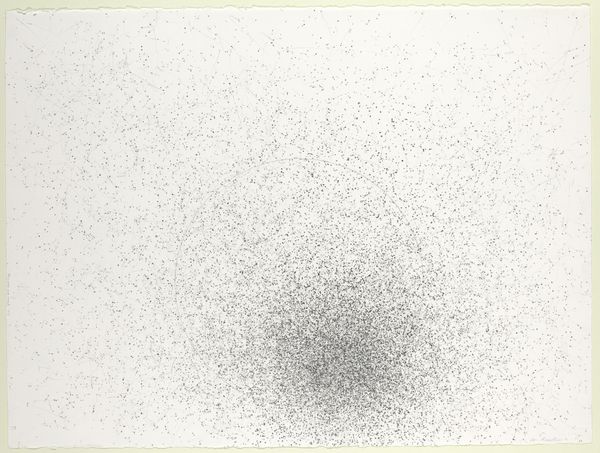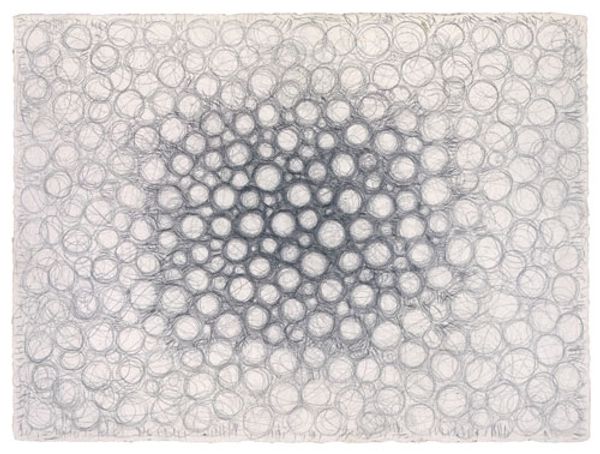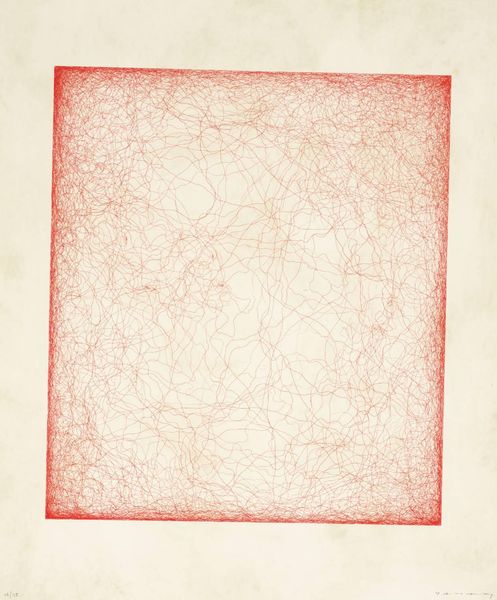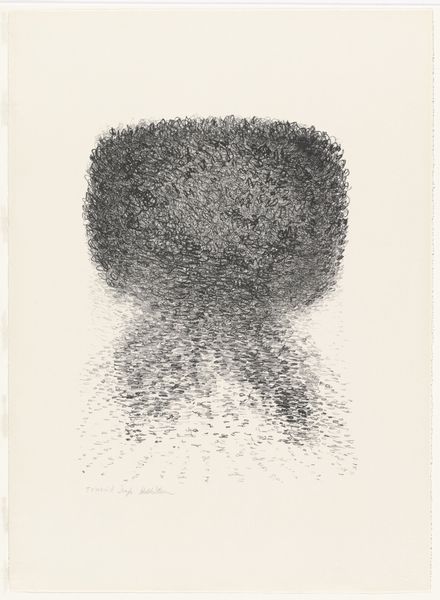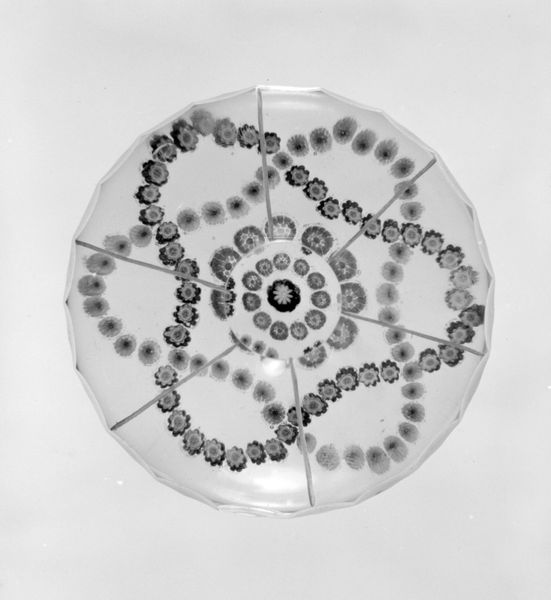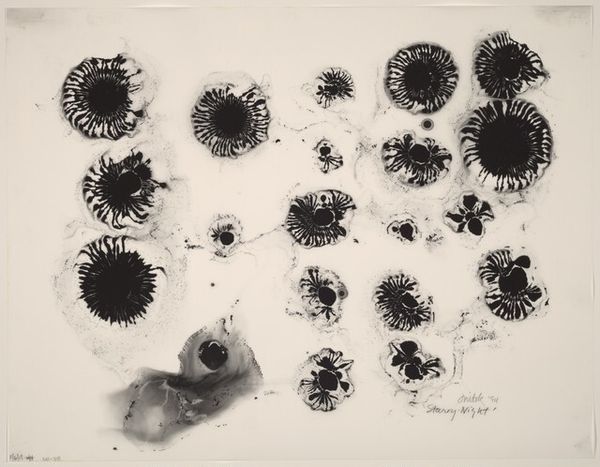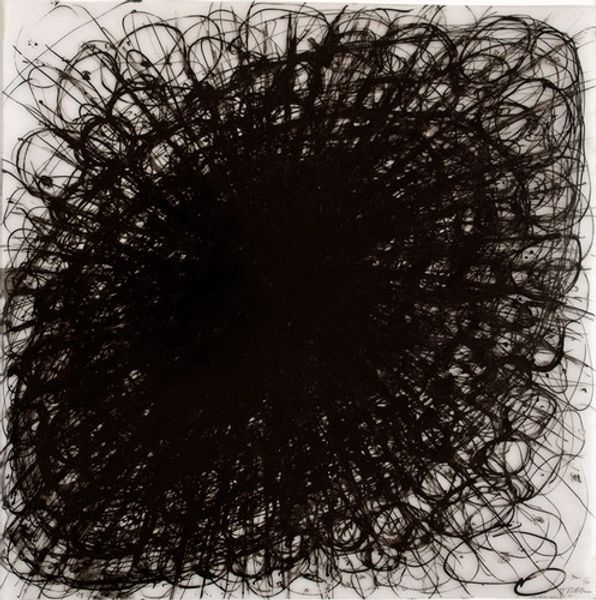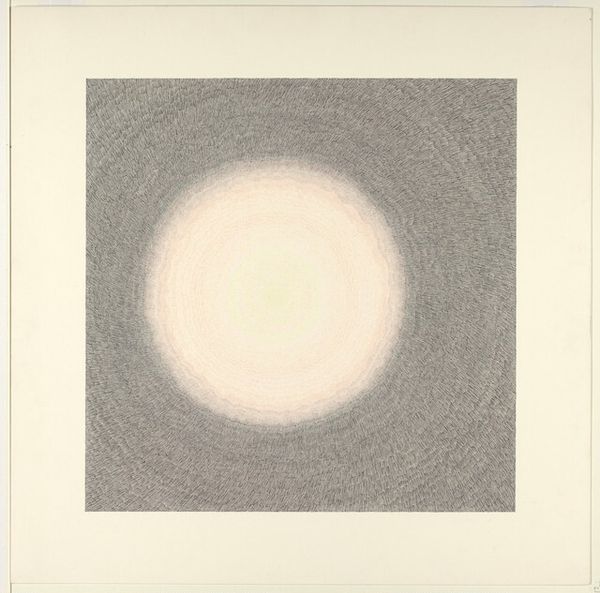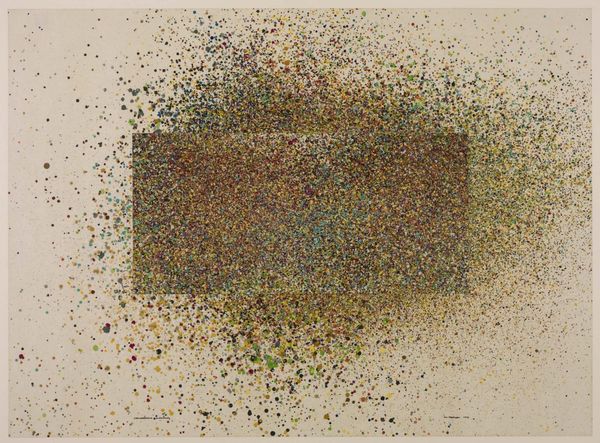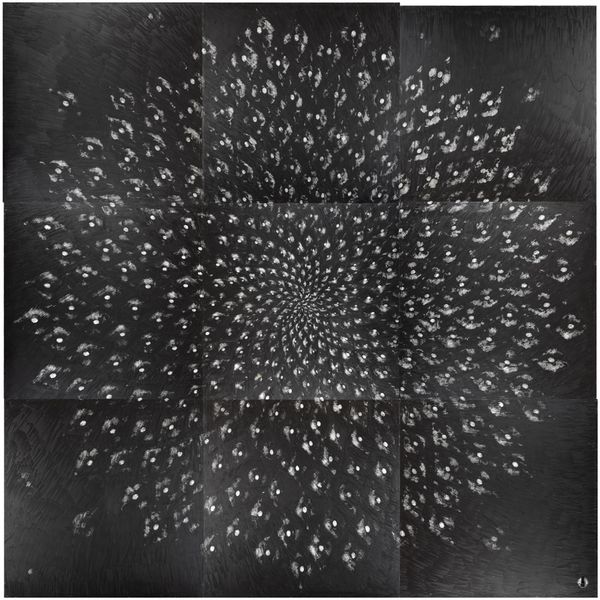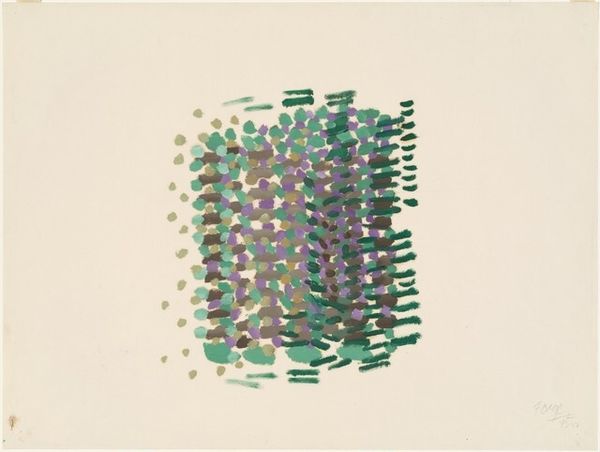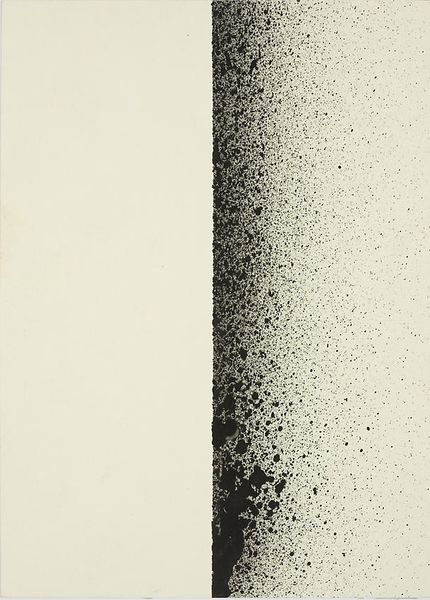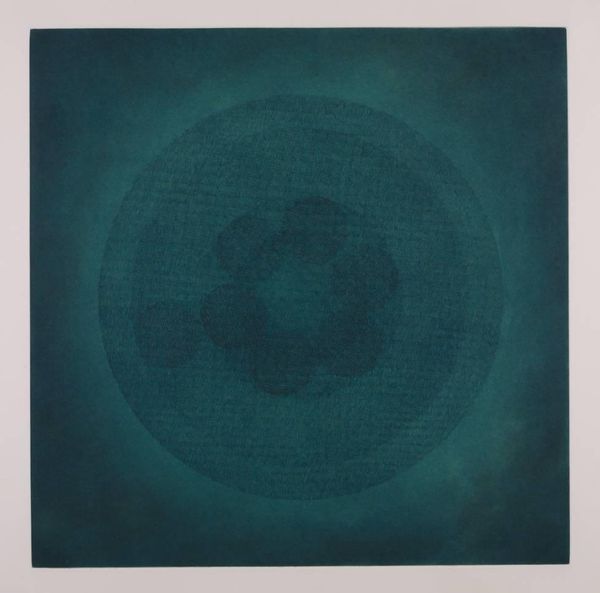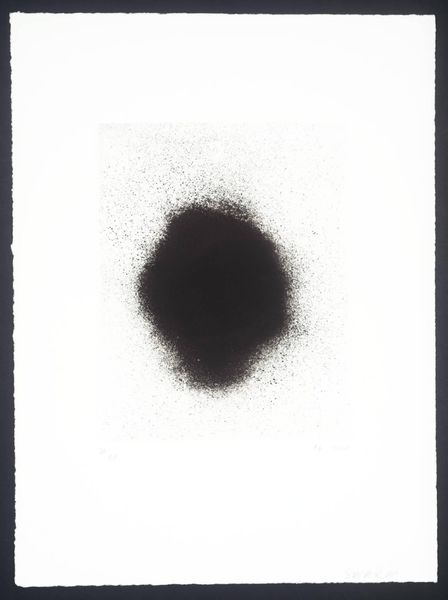
Untitled (From the series Graphic Objects) 1972
0:00
0:00
miraschendel
Museum of Modern Art (MoMA), New York City, NY, US
drawing, paper, serial-art, typography, ink, graphite
#
drawing
#
conceptual-art
#
pencil sketch
#
circle
#
incomplete sketchy
#
hand drawn type
#
paper
#
serial-art
#
typography
#
ink
#
geometric
#
calligraphic
#
geometric-abstraction
#
abstraction
#
graphite
#
modernism
#
calligraphy
Dimensions: 95 x 95 cm
Copyright: Mira Schendel,Fair Use
Curator: Looking at Mira Schendel's "Untitled (From the series Graphic Objects)," created in 1972, one is immediately struck by the layering and almost frantic accumulation of graphite and ink on paper. What are your initial thoughts? Editor: A flurry, a swarm of letters. It feels both delicate and intense. The obsessive mark-making speaks of labor, a kind of manual, repetitive act, don't you think? The way these letters cluster, almost forming a galaxy of language... Curator: Absolutely. This work fits squarely into Schendel's broader exploration of language and perception. Consider the socio-political context of 1970s Brazil, under military dictatorship. How might Schendel's abstraction of language—breaking down its communicative function—be read as a subversive act? Editor: Precisely. The choice of simple materials—graphite and ink—adds another layer. These are accessible, commonplace. There’s no illusion of grandeur here; instead, it seems a conscious grounding in the everyday experience of creating and questioning in a climate of suppression. Curator: Further, it feels pertinent to analyze Schendel's position as a Jewish immigrant in Brazil. Did her outsider status enable a particular perspective on language? The very notion of breaking down and abstracting language reflects an active interrogation of structures of power. The geometric forms present across her varied work point towards how constructed communication really is. Editor: And note the "serial" aspect. The repetitive act becomes crucial. It's a testament to the labor involved not just in creation but also in deconstruction and the questioning of established orders. The spiraling of the letters themselves, how is that achieved and how does this physical gesture on the paper add meaning? Curator: Right. So when we analyze "Untitled" using lenses like feminist theory, we can also note Schendel’s interest in destabilizing fixed meanings through fragmentation and repetitive mark-making as resistance. How materials and mark-making act as sites of challenging established socio-political forms is, in her case, an incredibly sophisticated approach. Editor: Thinking about process, and about making, brings this act of dismantling language home. The sheer materiality involved grounds it in tangible, social reality. A brave challenge in her time and context. Curator: Indeed, it speaks to the ability of artists, even through minimalist approaches, to reflect broader social realities and offer alternative ways of thinking. Editor: Agreed, her attention to detail underscores an undercurrent of critical consciousness, and shows that in the humblest tools and actions we can reveal complex narratives.
Comments
No comments
Be the first to comment and join the conversation on the ultimate creative platform.
